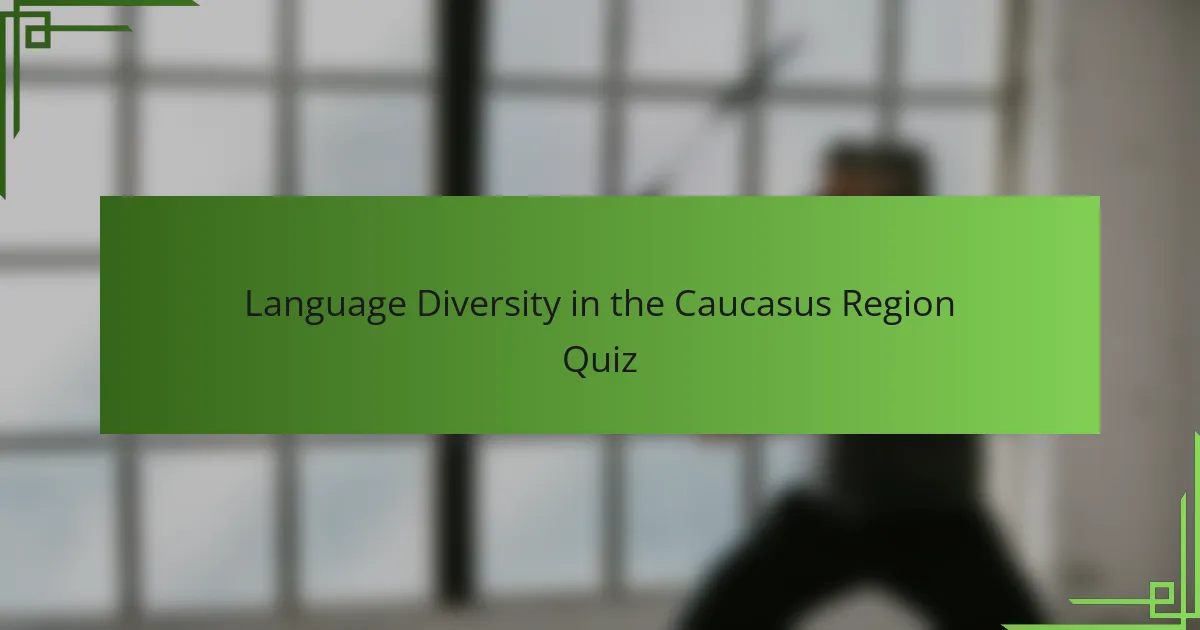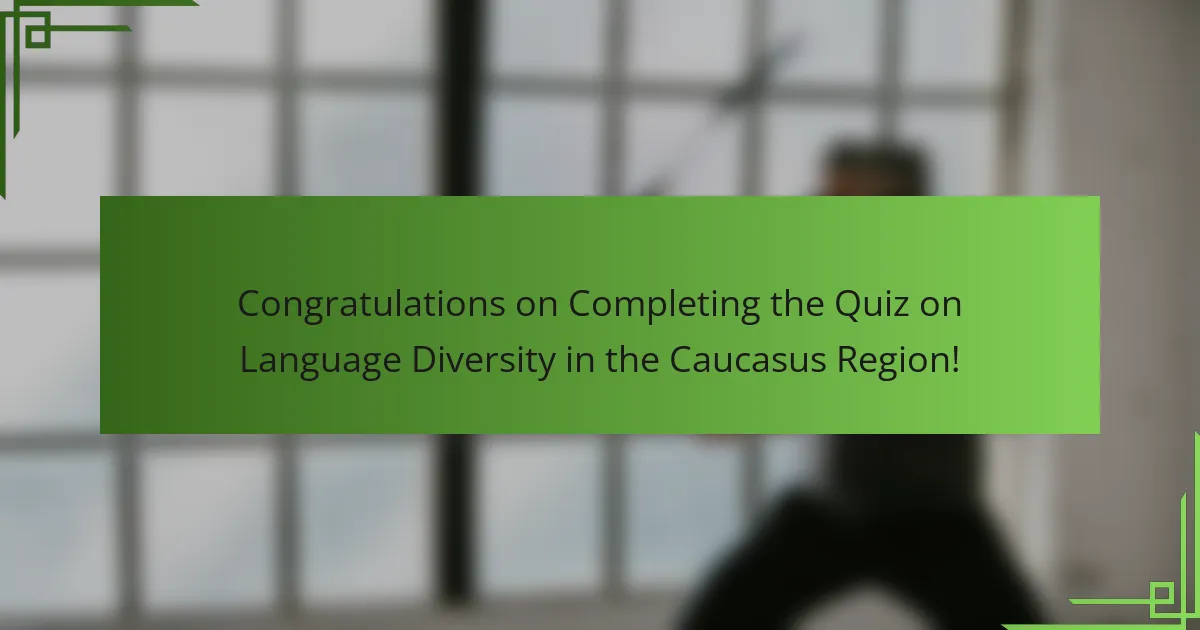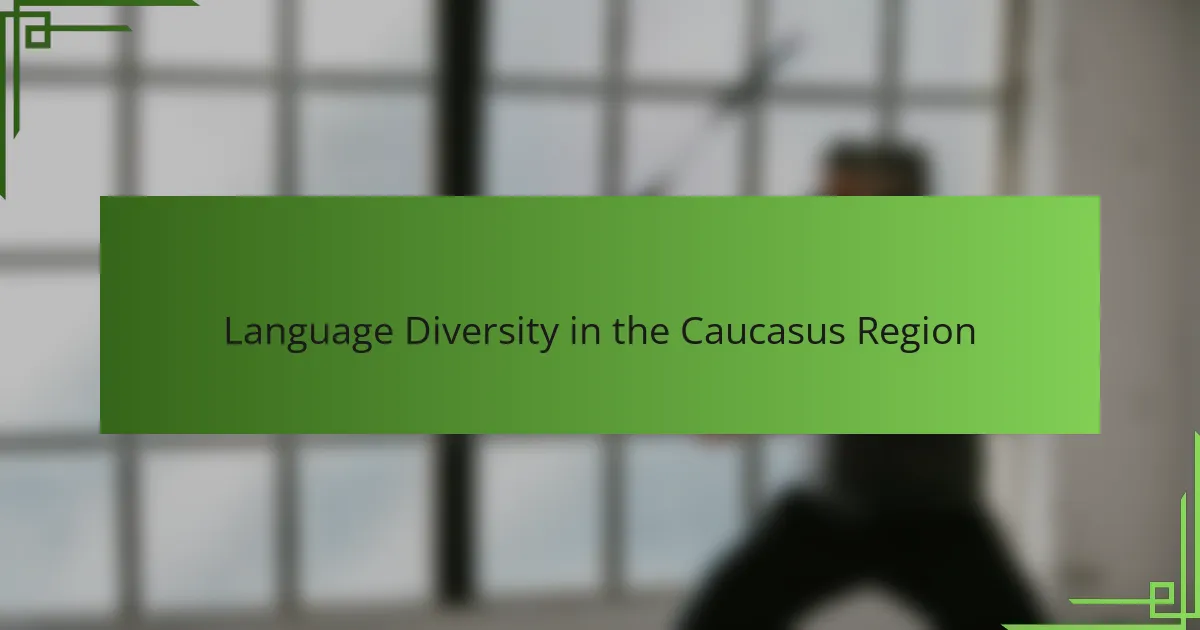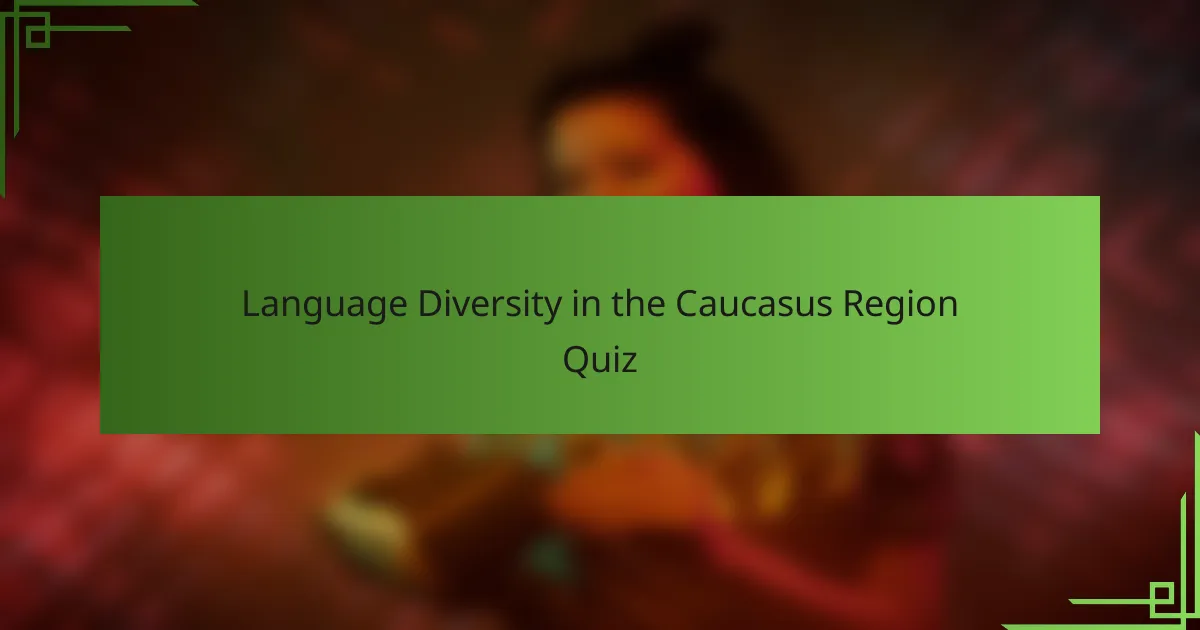
Language Diversity in the Caucasus Region Quiz
1. Which mountain range in the Caucasus region acts as a natural barrier influencing the distribution of languages?
- Alborz Mountains
- Pontic Mountains
- Lesser Caucasus Mountains
- Greater Caucasus Mountains
2. What language family does the Georgian language belong to, native to the Caucasus region?
- Semitic
- Kartvelian
- Turkic
- Indo-European
3. Which Caucasian country is known for having over 80 distinct languages spoken within its borders?
- Georgia
- Azerbaijan
- Russia
- Armenia
4. The Avar language is primarily spoken in which part of the Caucasus region?
- Dagestan, Russia
- Chechnya, Russia
- Azerbaijan
- Georgia
5. Which city is considered a linguistic hub due to its diverse languages in the Caucasus region?
- Tbilisi
- Yerevan
- Baku
- Grozny
6. The Lezgian language is predominantly found in which two countries in the Caucasus?
- Georgia and Armenia
- Russia and Azerbaijan
- Ukraine and Moldova
- Turkey and Iran
7. What is the primary language family of the Chechen language spoken in the North Caucasus?
- Northeast Caucasian
- Indo-European
- Northwest Caucasian
- Turkic
8. In the Caucasus region, the term `Kartvelian languages` refers to languages primarily spoken in which country?
- Georgia
- Russia
- Armenia
- Azerbaijan
9. The Laz language, spoken in the Caucasus region, belongs to the language family of which neighboring country?
- Chechen
- Armenian
- Azerbaijani
- Georgian
10. Which river valley in the Caucasus region is known for its high density of language diversity?
- The Talysh Mountains
- The Kura-Aras Lowland
- The Dagestan Valley
- The Svaneti Region
11. The Ingush language is part of which linguistic grouping native to the Caucasus?
- Kartvelian languages
- Nakh-Daghestanian languages
- Indo-European languages
- Northwest Caucasian languages
12. Which ancient language, once spoken in the Caucasus, is considered a language isolate?
- Elamite
- Hurrian
- Sumerian
- Urartian
13. The Kabardian language, prominent in the Caucasus, is part of which major language family?
- Kartvelian
- Turkic
- Northeast Caucasian
- Northwest Caucasian
14. What role does the Greater Caucasus Mountain Range play in the preservation of linguistic diversity in the region?
- It serves as a political boundary that enforces official language policies reducing diversity.
- It promotes uniform agricultural practices that encourage linguistic standardization.
- It connects major trade routes that facilitate language mixing and convergence in the region.
- It acts as a natural barrier that limits movement between communities, allowing distinct languages to develop and persist.
15. Which South Caucasus country uses Armenian as its official language, contributing to the region’s language diversity?
- Turkey
- Azerbaijan
- Armenia
- Georgia

Congratulations on Completing the Quiz on Language Diversity in the Caucasus Region!
You’ve just explored one of the most linguistically rich areas in the world. The Caucasus region is home to a fascinating blend of languages and cultures. Through this quiz, you have gained insight into the geographic factors that contribute to such diversity, including mountains, valleys, and historical migration patterns.
This quiz has also highlighted how language ties into the geography of the region. Understanding the geographic layout helps explain why so many unique languages coexist here. It’s a perfect example of how physical geography shapes human culture and communication.
If you found this topic interesting, we invite you to explore the next section on this page. There, you will find in-depth information about the geographic and cultural dynamics influencing language diversity in the Caucasus. It’s a great way to deepen your knowledge and continue your geographic journey.

Language Diversity in the Caucasus Region
Geographical Overview of the Caucasus Region
The Caucasus is a mountainous region situated between the Black Sea and the Caspian Sea, encompassing countries such as Georgia, Armenia, and Azerbaijan, as well as parts of southern Russia, including Chechnya and Dagestan. Its geographic complexity creates isolated communities that have preserved diverse languages. This area’s geography, featuring rugged mountains and valleys, has contributed to the development and maintenance of distinct linguistic groups over centuries.
Major Language Families in the Caucasus Region
The Caucasus region is notable for its linguistic diversity, hosting three primary language families: Northwest Caucasian, Northeast Caucasian, and Kartvelian (South Caucasian). For example, Circassian languages belong to the Northwest Caucasian family, Chechen is part of the Northeast Caucasian family, and Georgian belongs to the Kartvelian family. These language families are unique to the region and are not related to Indo-European or Turkic languages geographically surrounding the area.
Influence of Geography on Language Distribution in the Caucasus
The region’s mountainous terrain strongly influences language distribution by isolating populations, which fosters linguistic fragmentation. Valleys and highlands serve as natural barriers, leading to the formation of small language communities like those speaking Avar in Dagestan or Laz on the Black Sea coast. This geographic isolation has preserved ancient languages, preventing widespread language convergence across the region.
Language Diversity within Political Boundaries in the Caucasus
Political entities in the Caucasus exhibit diverse language profiles. For instance, Azerbaijan primarily speaks Azerbaijani, a Turkic language, while Georgia’s official language is Georgian, a Kartvelian language, and Armenia’s main language is Armenian, an Indo-European language unrelated to Caucasian languages. Additionally, Russia’s Republics of Dagestan and Chechnya contain multiple indigenous languages, including Avar, Lezgian, and Chechen, underscoring the intricate language mosaic within political borders.
Endangered Languages of the Caucasus and Geographic Factors
Many Caucasian languages face endangerment due to shifting demographics and geopolitical changes. Geographic isolation has helped preserve languages like Udi and Tsakhur in isolated villages, but modernization and migration threaten their use. The limited geographic distribution of these languages increases their vulnerability, as fewer native speakers remain confined to particular mountainous areas, making language preservation efforts critical.
What languages are primarily spoken in the Caucasus region?
The Caucasus region is characterized by a high diversity of languages, primarily including Kartvelian languages such as Georgian, Northeast Caucasian languages like Chechen and Avar, and Northwest Caucasian languages such as Abkhaz and Adyghe. Additionally, Indo-European languages like Armenian and Ossetian, along with Turkic languages such as Azerbaijani, are also spoken. This linguistic variety is documented by linguistic surveys and ethnolinguistic studies conducted by institutions like the Max Planck Institute for Evolutionary Anthropology.
How does the geography of the Caucasus contribute to its language diversity?
The mountainous terrain of the Caucasus creates natural barriers that lead to isolation of communities. This geographic isolation fosters the development of diverse and distinct languages within small areas. The rugged mountains prevent easy communication and interaction, allowing unique languages to evolve over time. This influence of geography on language diversity is supported by geographic and linguistic correlation studies published by the Caucasus Heritage Watch and other regional research bodies.
Where is the Caucasus region located geographically?
The Caucasus region is situated between the Black Sea to the west and the Caspian Sea to the east, spanning parts of southern Russia, Georgia, Armenia, and Azerbaijan. It forms a natural border between Eastern Europe and Western Asia. This definition and location are confirmed by global geographic databases such as the CIA World Factbook and the United Nations geospatial information division.
When did the linguistic diversity in the Caucasus begin to emerge?
The linguistic diversity in the Caucasus began to emerge thousands of years ago, as prehistoric populations settled and adapted to the varied and isolated landscapes. Linguistic studies, including glottochronology and comparative linguistics, suggest the presence of distinct language families in the region dating back at least several millennia, supported by archaeological findings and historical linguistic analyses documented in academic journals such as the Journal of Caucasian Studies.
Who are the major ethnic groups contributing to language diversity in the Caucasus?
The major ethnic groups contributing to the Caucasus’ language diversity include Georgians, Armenians, Azerbaijanis, Chechens, Avars, Ossetians, and Circassians. Each group speaks distinct languages belonging to different language families, reflecting their unique cultural and linguistic heritage. This information is validated by national census data from Georgia, Armenia, and Azerbaijan, as well as ethnographic research conducted by organizations like the Caucasus Research Resource Centers.
